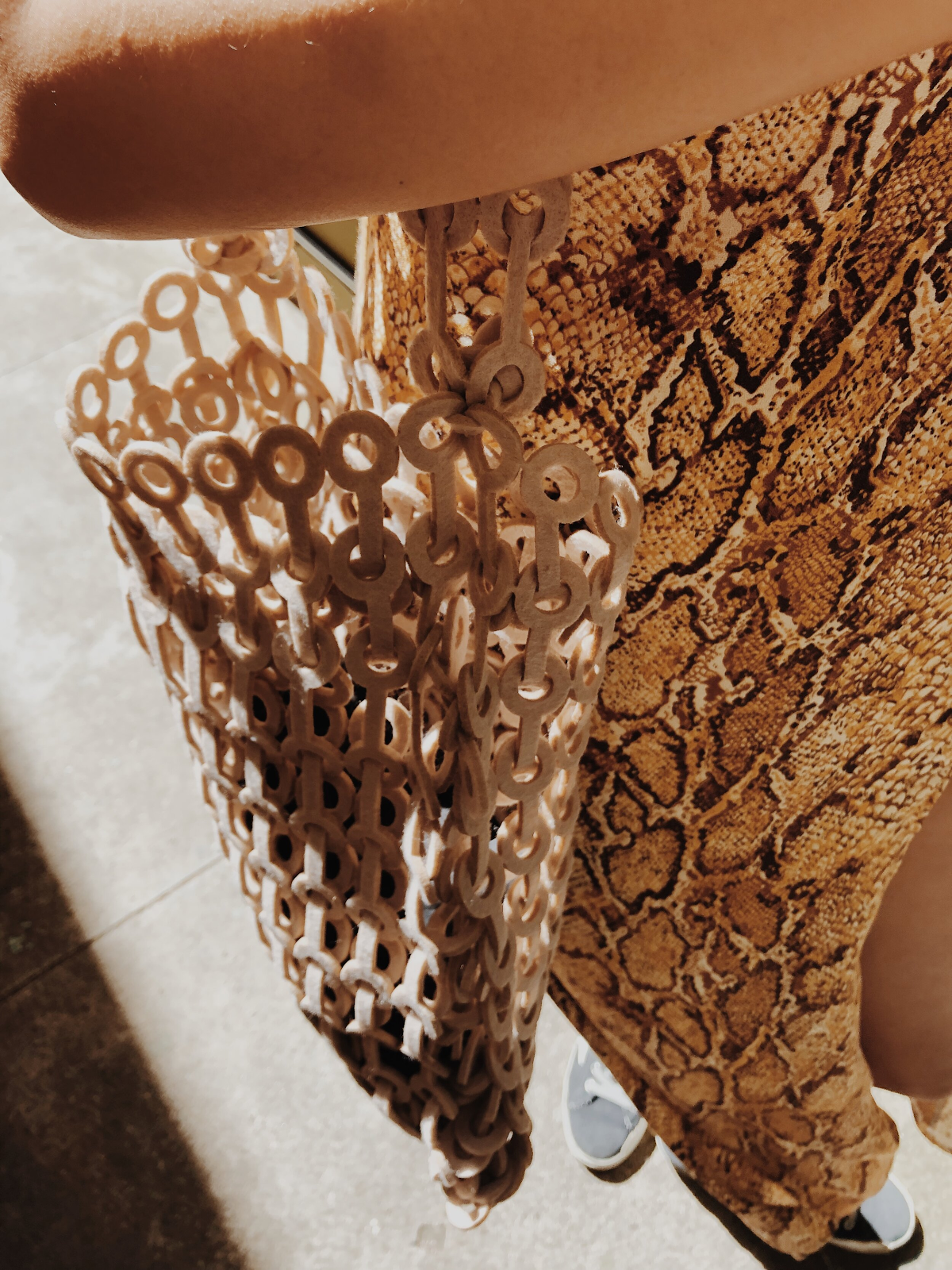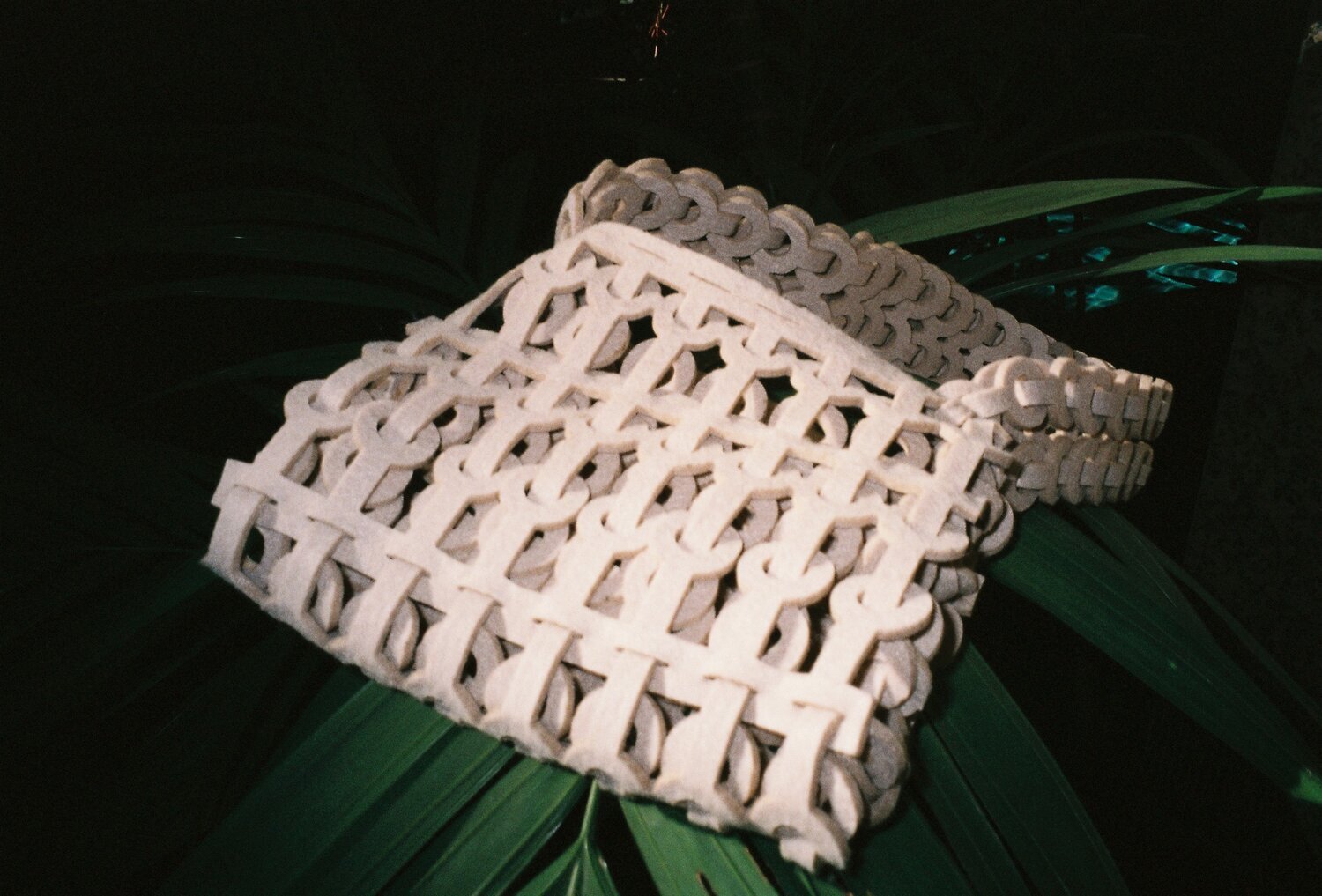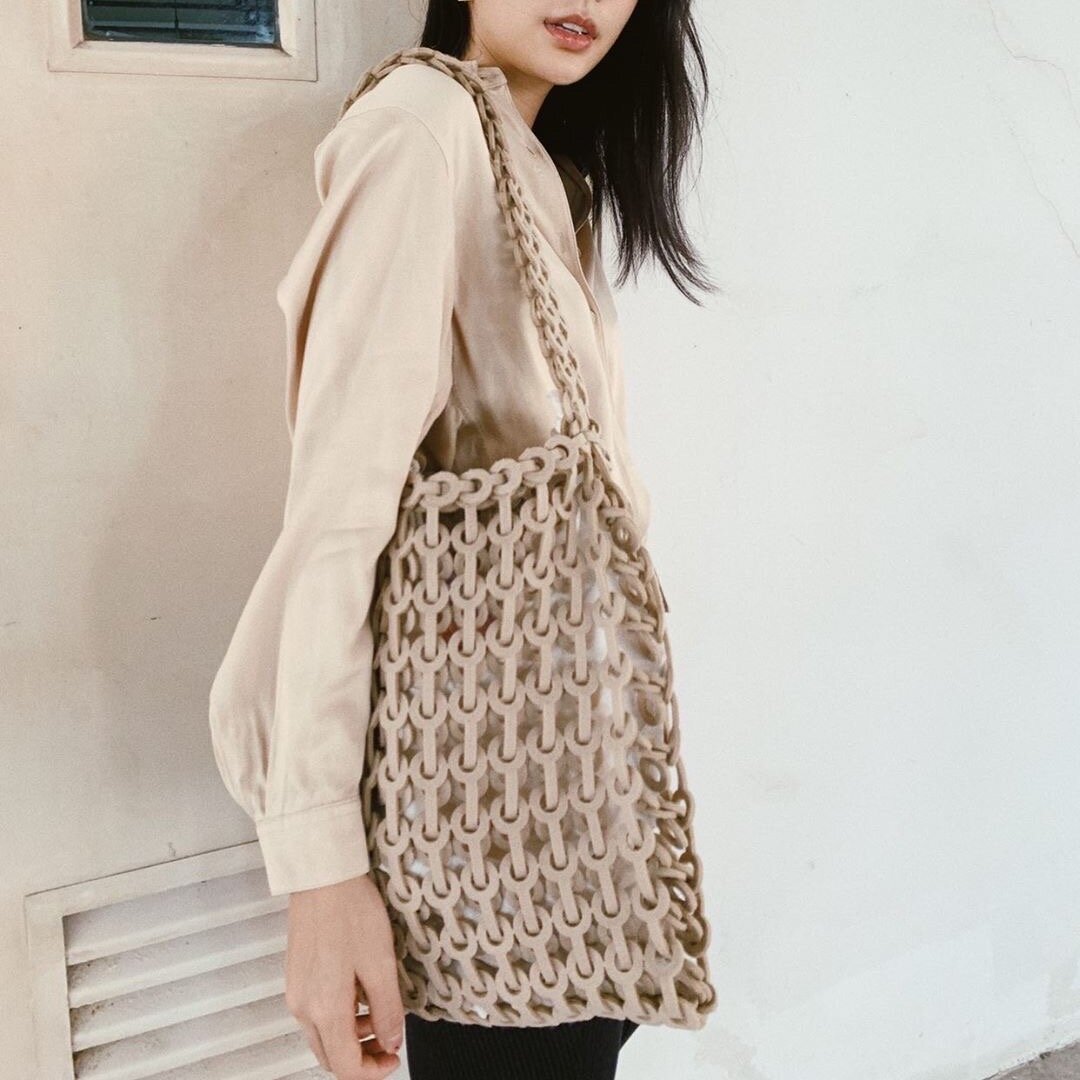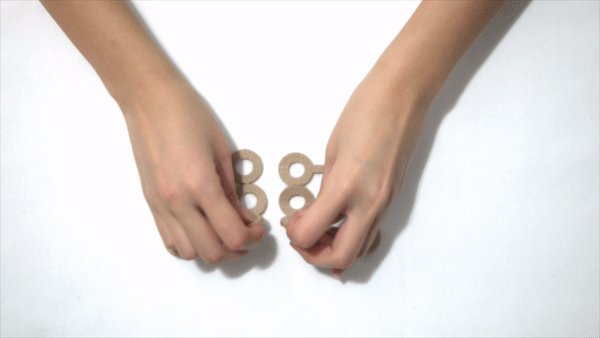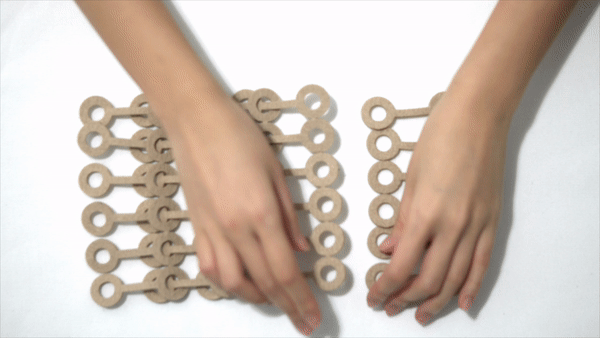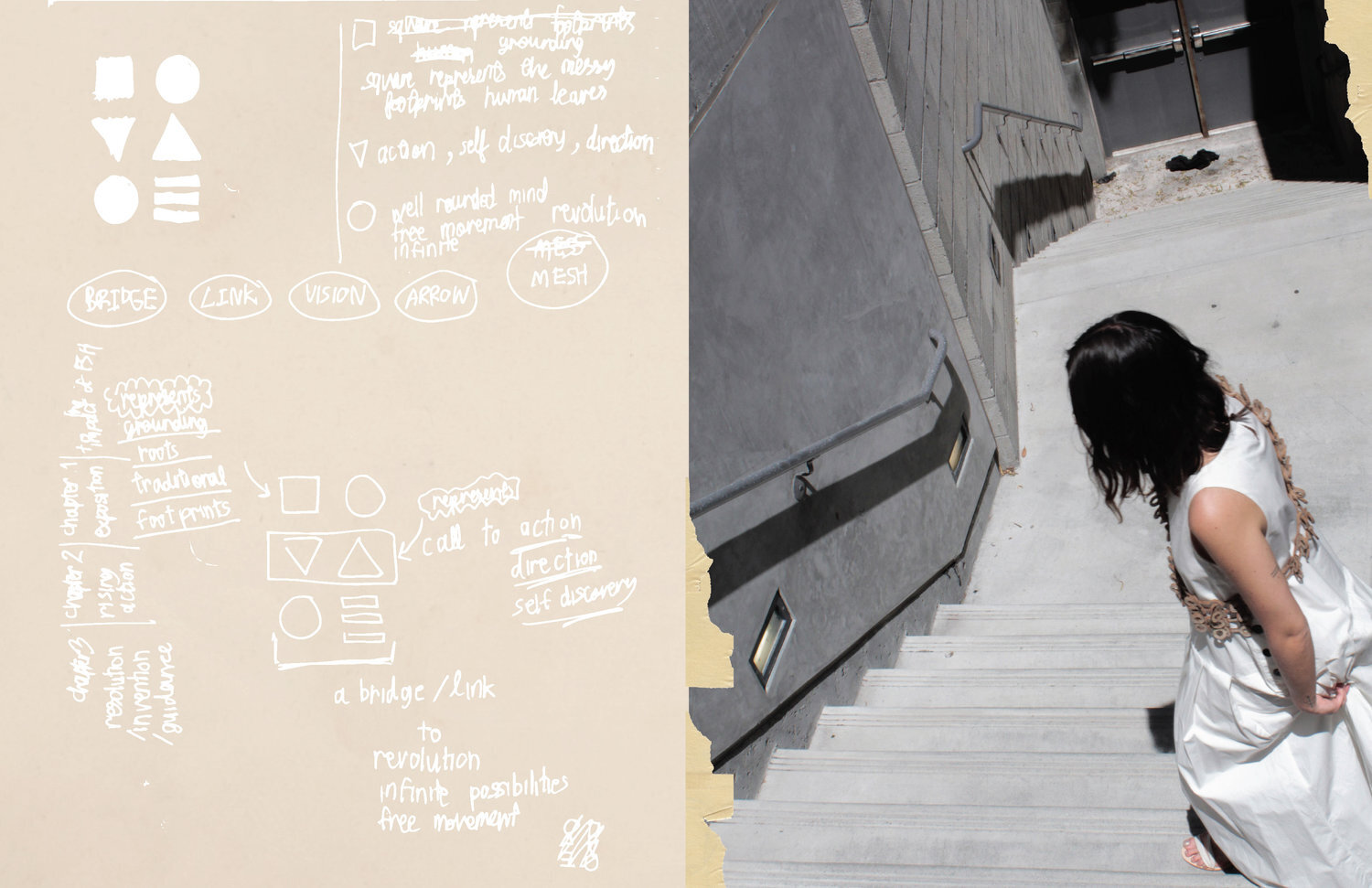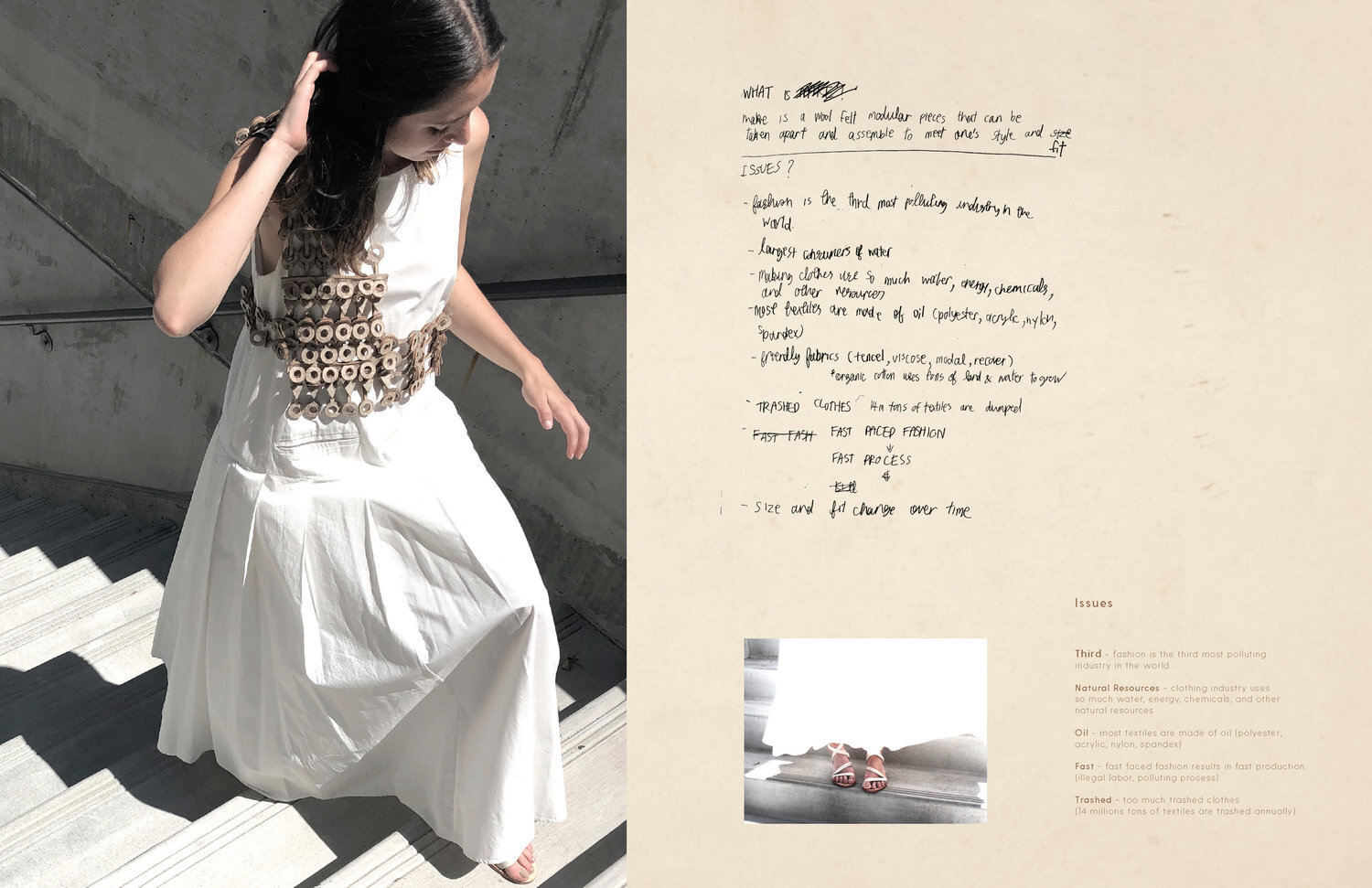An Interview with Mesh

The sustainable fashion movement has steadily gained traction for the past few years, and designers are developing innovative solutions to environmental problems in the industry. One of these designers is Marisa Chentakul, the founder of sustainable fashion company, Mesh. Chentakul reimagines fashion through the use of individual modular units in each design, which she refers to as “wearable legos”. Each piece can be taken apart completely, and rebuilt by the user into something completely new. Rather than purchasing new items as trends change, Mesh allows consumers to repurpose what they already own. The company mission is to allow people to be their own creator of fashion, not just a consumer of it.
Talking to FORM, Chentakul discusses her inspirations behind the company, human-centered design, gender disparities, and future goals.
FORM: Thank you for taking the time to chat. I wanted to start off by asking what led you to come up with the idea for Mesh?
Marisa Chentakul: I grew up with my mom who was a fashion designer. She has her own label back home in Thailand so I went to fashion school thinking I’d want to take over her brand one day. That was the reason I studied fashion during undergrad. Two years in, I’m having a lot of fun and I took this class called ‘Jewelry and Materials Design’. The prompt for that class was to create a modular, wearable accessory piece that could be customized based on a user’s needs. As a designer in the United States, something that has been bothering me about the fashion industry is this compulsive buying instinct (even in quarantine you can see people shopping for cocktail dresses, or shopping for fashion on Amazon), and how people feel like they never have enough clothes in their closet. This raised the question for me of, how much of our closet do we actually wear? I wanted to give people the ability to play with what they have and create something that is tailored to them.
Growing up, I lived in this townhouse where the bottom floor was my mom’s factory. I thought a lot about how much waste we were producing, but at the time, sustainability wasn’t a huge focus. So when I moved to the United States, this notion of sustainability was becoming more important and I wanted to create something to address that.
My second inspiration for Mesh is my personal belief that everyone is born creative. Everyone is creative in their own way, but so many people are really intimidated by the process of creating. Because of that, I would hope that Mesh could unleash people’s creative minds.
F: In terms of the design of Mesh bags, it’s incredibly innovative. What was the process like of getting to that final design?
MC: The concept for MESH was inspired by legos! I wanted to create a library of reusable components, so I considered how to go about doing that. I think what inspired me to make the circle-stem shapes specifically was the process of knitting and weaving. For the first design concept, I started working with paper, so I would draw the shape onto a piece of paper and use an x-acto knife to cut around it. The first iteration was really small--you couldn’t even hold your iPhone in it or it would break apart--so I had to experiment a lot in the lab. I went through 3 or 4 iterations and then launched my Kickstarter campaign.
At the time, I was in Thailand so I didn’t have access to my university’s laser cutting technology. I had to travel around Asia in hopes of finding a machine that I could use. I eventually found one factory in Thailand that was nice enough to let me experiment with it. After that, I went through about 2 more trials to get to the final design, so in total, it took me about 6 iterations.
F: I’m sure that launching a business can be time-consuming and challenging to navigate. What was it like taking Mesh from an idea to a physical product?
MC: Originally, this product was only meant for a class project, but my teacher and classmates ended up really liking it. A few of them asked me to make a few of these bags for them as gifts, so I started making them and selling them just for fun. At the time, I was looking at applying to graduate school, so a friend suggested that I make a Kickstarter campaign to save some money and really try to turn this project into a business. At first, I was afraid because I had never put any of my designs out into the public, and I wasn’t sure how people would respond to it. But it turned out well, and I received good funding for it. After that, I set up an online store and that’s what you see now. I often try to go to workshops or set up booths at music festivals to publicize.
F: Mesh did a collaboration with Leisure Project earlier this year. What are other brands that you would like to work with or that you draw inspiration from?
MC: Yes, so Leisure Project is a menswear brand which I was interested in since Mesh is popular mostly with women, and I wanted to tap into the menswear space. As for future collaborations, there was a tampon brand that recently reached out to me and we’re looking into making a small bag for toiletries. I’d also like to expand and work with Wild One to make dog leashes or collars, or even work in interior design to make things like curtains or pillows. I’m looking to zoom out from apparel and reach into these different spaces as of now.
F: Outside of Mesh, you also run the Design Picnic podcast, a social media space called Meshtimes, and you work as a UX designer in the tech field. What was your path to working in design and how do you strike a balance between all these areas of your work?
MC: While I was in undergrad, I was making a lot of clothes for the runway, and I felt like I was wasting a lot of material, and I didn’t feel like I was solving any problems. It felt like it was aesthetic over utility. That sparked my interest in human-centered design, and I really began digging into different problems that I could address through design. I didn’t want to design just for an aesthetic purpose, I wanted to design to serve a useful purpose, or in a way that could make people’s lives better. I think Mesh was my transition project from fashion to the tech field, although I still consider myself a fashion designer. This project made me consider, how can I transport user’s needs into a product? And how do I build something that changes with people? It’s not about picking the perfect colors anymore, it’s about picking what is best for users. So instead, I’m asking, what is colorblind-friendly? And other questions about inclusivity.
I still struggle with balancing all my projects, so I’m definitely not the most perfect, completely organized person. However, I try to surround myself with other people who have similar goals, so all my friends are always working on different projects as well. I find that surrounding myself with those kinds of people really helps push me forward. In terms of my work process, I make 2 to-do lists, one for work and one for my personal projects. So after 9:00, I close my work to-do list, and whatever I don’t finish I do the next day. At night and on the weekends, I focus on my personal to-do list.
F: As an advocate for women in tech and design, what change do you hope to see in the future in the industries that you’re a part of?
MC: I can see these issues even in my current workplace. I feel like women apologize too much for things they are allowed to do. I always hear things like “oh, I’m sorry I’m talking too much in this meeting” or “I’m sorry, I type too much on slack”. I always try to tell my female coworkers not to apologize for things like that. I’d like to see more women in leadership positions as well, like the head of design, or head of engineering. Ten years ago, most people in the tech space were male, so I’m excited to see more women step up into these roles.
F: What should everyone be on the lookout for from you in the future?
MC: Be on the lookout for a fashion-tech company! I want to create a community hub where fashion designers and people in the tech space can come together and work on solving different problems, such as sustainability, especially in the fashion industry. Also, be on the lookout for Mesh 2.0.

